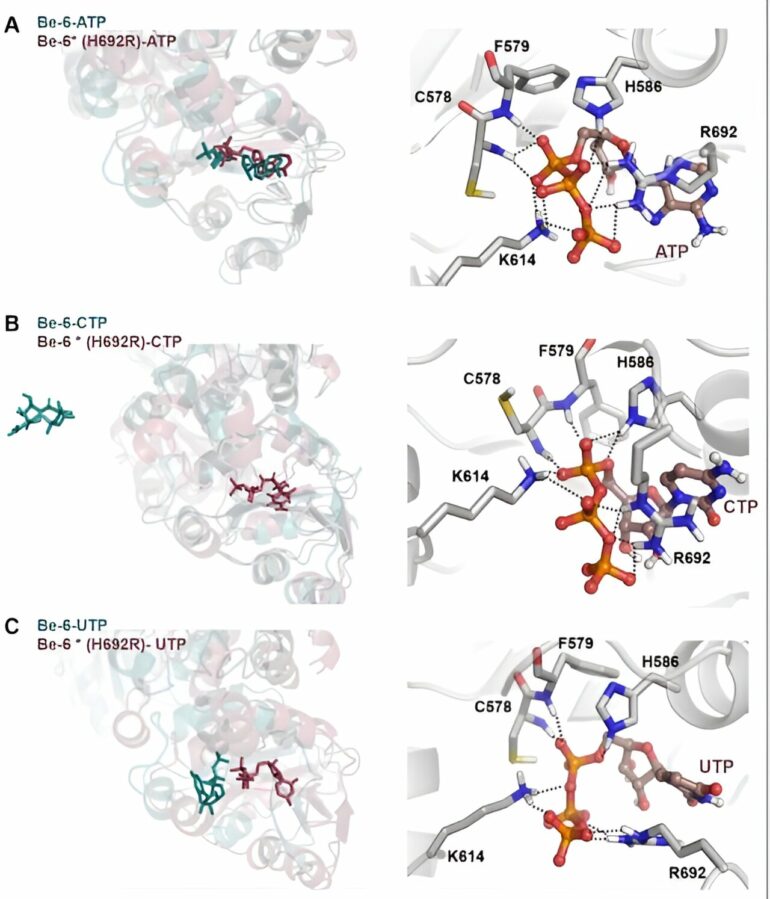Bacterial small molecule metabolites, such as adenosine-diphosphate-d-glycero-β-d-manno-heptose (ADP-heptose) and their derivatives, act as effective innate immune agonists in mammals.
ADP-heptose is synthesized from d-sedoheptulose 7-phosphate (S7P) via a four-step relay catalyzed by NDP-heptose biosynthetic enzymes (HBEs) with isomerase, kinase, phosphatase, and nucleotidyltransferase activities. Knowledge of β-d-manno-heptose biosynthesis is limited to bacteria, and non-bacterial HBEs have not been described yet.
In a study published in Science, Prof. Chen Yihua’s lab at the Institute of Microbiology of the Chinese Academy of Sciences (IMCAS), collaborating with Prof. Shao Feng from the National Institute of Biological Sciences, and Prof. Wu Bian from IMCAS, expanded the distribution of HBEs and the structural diversity of NDP-heptoses.
They found that the β-d-manno-heptoses are cross-kingdom small molecule pathogen-associated molecular patterns that activate the alpha-protein kinase 1 (ALPK1)-dependent innate immune signaling cascade.
The researchers discovered that functional HBEs are widely distributed in bacteria, archaea, eukaryotes, and viruses. A conserved STTR5 motif was identified as a hallmark of heptose nucleotidyltransferases that can synthesize not only ADP-heptose but also cytidine-diphosphate (CDP)- and uridine-diphosphate (UDP)-heptose.
The researchers found that both CDP- and UDP-heptoses are agonists that trigger stronger ALPK1-dependent immune responses than ADP-heptose in human and mouse cells, and that ADP-heptose is also produced in archaea and verifies its innate immune agonist functions.
Evolutionary analysis showed that, after deuterostomes lost the ability to synthesize β-d-manno-heptoses, some vertebrates, including mammals, evolved ALPK1s as specific receptors for immunological recognition of β-d-manno-heptoses produced by members of different kingdoms.
Considering the vast number and diverse origins of HBEs, the researchers believe that heptose metabolites play many more biological roles than currently known.
This study updates the distribution of the β-d-manno-heptose metabolites, and sets the stage for future studies regarding the structural diversity of HBE-related heptose metabolites and their biological roles in different kingdoms.
More information:
Yue Tang et al, The β- d – manno -heptoses are immune agonists across kingdoms, Science (2024). DOI: 10.1126/science.adk7314
Provided by
Chinese Academy of Sciences
Citation:
Researchers find β-d-manno-heptoses are immune agonists across kingdoms (2024, August 9)



